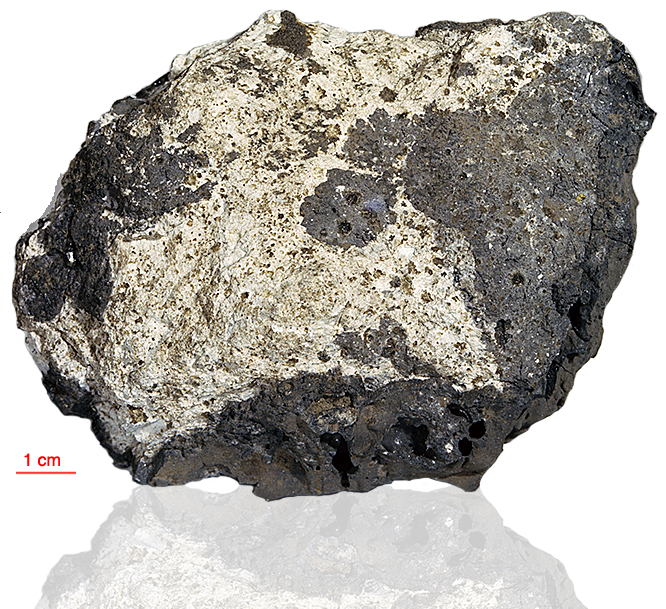
Fact sheet
65035 is a breccia with large clasts of light-coloured cataclastic anorthosite intermixed with dark-coloured basaltic impact melt. It is covered with a thick glass coat on one side. 65035 was a glass-coated bomb that landed on the regolith while the glass was apparently still molten allowing welding of fine regolith material. Our (slightly thick) thin section mainly shows the glass coating which is in parts flow-banded and in other parts devitrified (see both rotations). Another remarkable sample.
The sample weighed 446 grams before analysis and has not been dated.
Further details of this and other Apollo samples are here: http://curator.jsc.nasa.gov/lunar/
The Apollo 16 landing site was in the hilly region around Descartes crater in the lunar highlands. The landing spot was chosen to allow the astronauts to gather geologically older lunar material (Descartes Formation and the Cayley Formation) than the samples obtained in the first four landings, which were in or near lunar maria.
The mission lasted 11.1 days, with a stay on the lunar surface of 71 hours. The crew were on the lunar surface for 20.2 hours during which they traversed approximately 27 kilometers and collected approximately 96 kilograms of samples.
Apollo 16 was launched on 16 April 1972.






